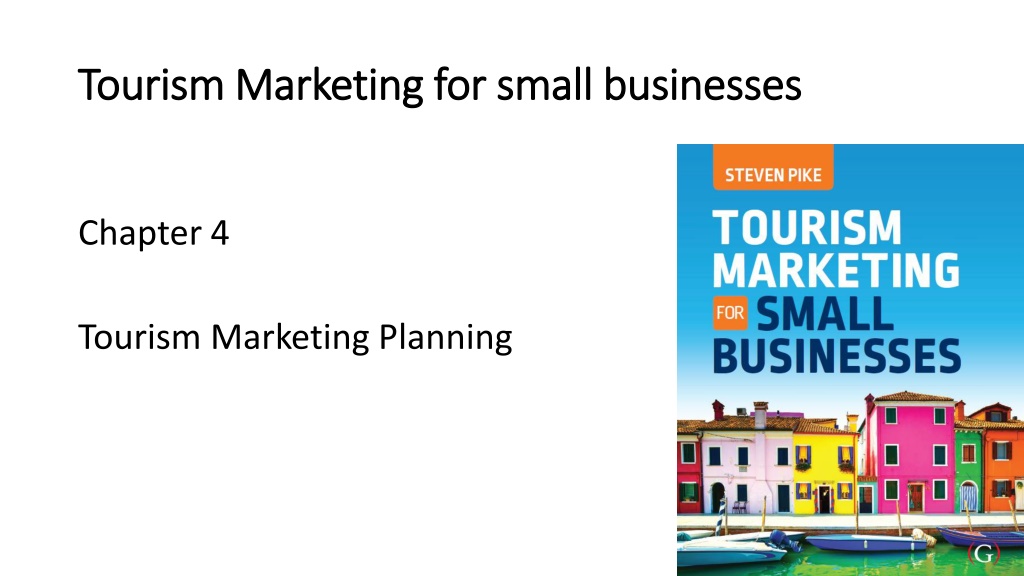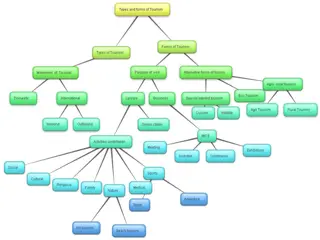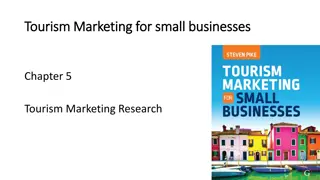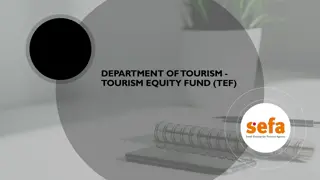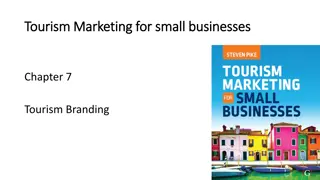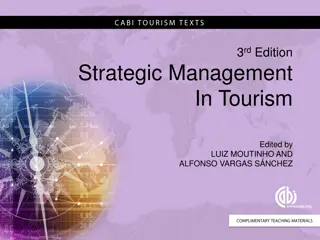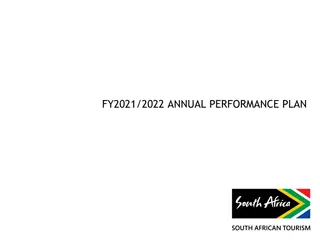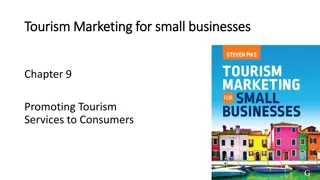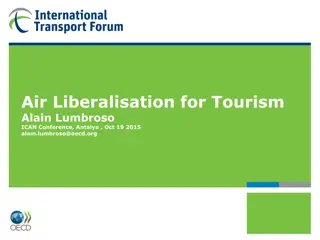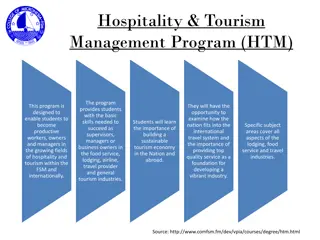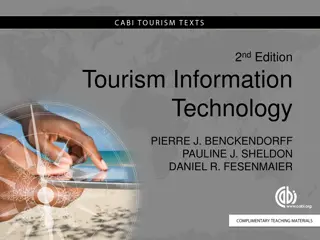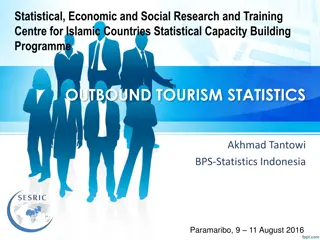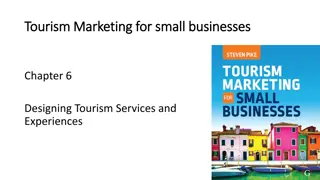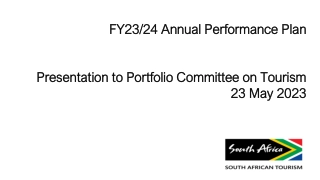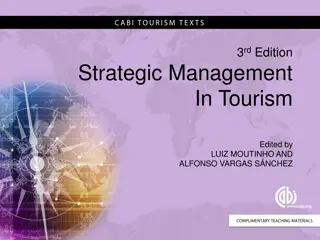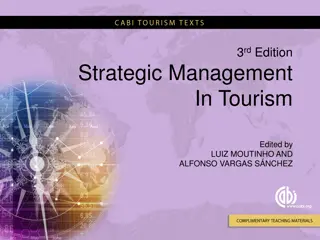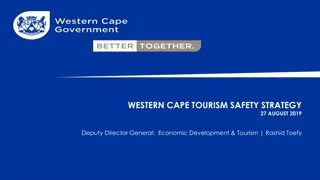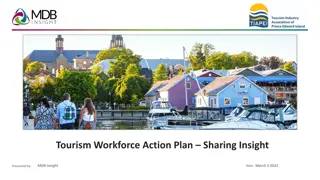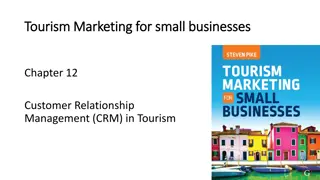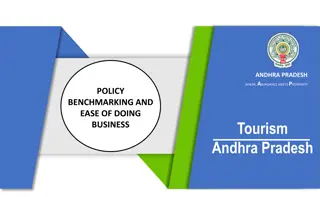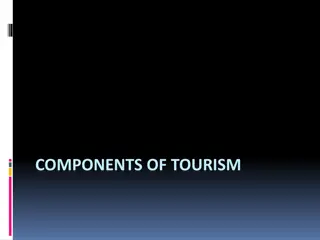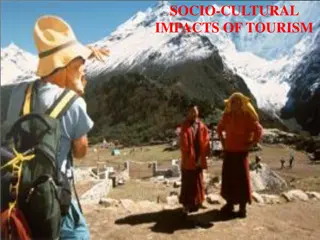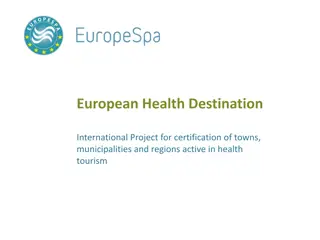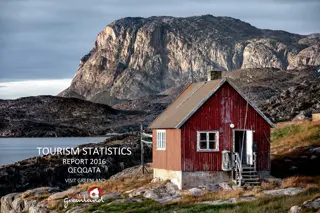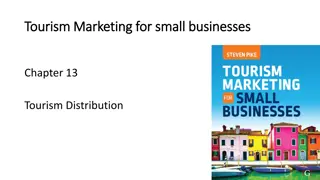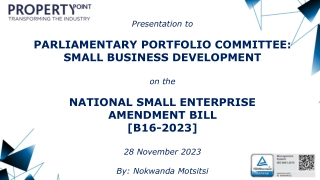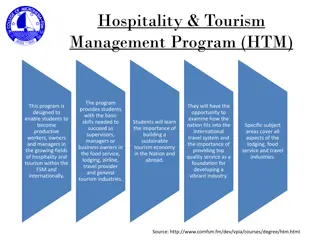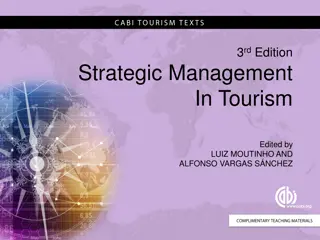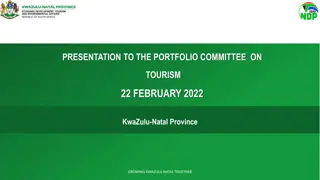Enhancing Tourism Marketing: Strategies for Small Businesses
Explore the importance of marketing planning for small tourism businesses, focusing on gaining a competitive edge through strategic planning stages like situation analysis, objective development, performance measurement, and tactics implementation. Discover key terms like competitive edge, strength, and opportunity, as well as operate effectively in a dynamic market by utilizing frameworks such as STEEPL for analyzing macro-environmental factors.
Download Presentation

Please find below an Image/Link to download the presentation.
The content on the website is provided AS IS for your information and personal use only. It may not be sold, licensed, or shared on other websites without obtaining consent from the author. Download presentation by click this link. If you encounter any issues during the download, it is possible that the publisher has removed the file from their server.
E N D
Presentation Transcript
Tourism Marketing for small businesses Tourism Marketing for small businesses Chapter 4 Tourism Marketing Planning
Chapter learning aims Chapter learning aims To enhance your understanding of: marketing planning as a forward thinking process the importance of marketing planning in striving to gain a competitive edge the key stages in marketing planning
Key terms Key terms Competitive edge While competitive advantage is a common term, a competitive edge is a more realistic ambition for small tourism businesses. A competitive edge is gained when the business uses a strength to take advantage of an opportunity before rivals do. Strength A resource controlled by the firm, which is valuable in terms of either increasing revenue or decreasing costs, and is relatively rare among competitors in a target market. Opportunity A positive force in the external macro-environment, over which the firm has no control.
Marketing planning cycle Marketing planning cycle Situation analysis Development of objectives Performance measurement Development of tactics
Marketing planning stages Marketing planning stages Stage Informal question Formal term 1 Where are we now? Situation analysis 2 Where do we want to go? Development of objectives 3 How do we get there? Tactics implementation 4 How will we know we got Performance monitoring there?
Operating in a dynamic (constantly changing) Operating in a dynamic (constantly changing) market market We live in an age of continuous discontinuous change This requires constant monitoring of the environment To identify those changes with the potential to impact on our business Either positively or negatively Opportunity Threat
Situation analysis: STEEPL Situation analysis: STEEPL Also known as STEP, PEST, PLEETS A framework for analysing opportunities and threats in the macro- environment Socio-cultural forces Technological forces Economic forces Environmental forces Political forces Legislative forces
Futurists Futurists www.thefutureplace.com Ray Poynter http://www.trendwatching.com/ www.wfs.org Charles Handy Alvin Toffler Peter Drucker John Naisbett Faith Popcorn
Situation analysis: SW/OT Situation analysis: SW/OT Strengths internal resources/we control Weaknesses internal resources/we control ______________________________________________________________________________________________________________ Opportunities external forces/we don t control Threats external forces/we don t control
What are strengths? What are strengths ? KEYPOINT = relative to competitors Resources controlled by the firm Importance of resource audit Market specific Eg might differ between Japan market and USA market Situation specific Eg Short break needs versus family summer holiday needs
Sustainable competitive advantage Sustainable competitive advantage How do we know when we have got it? 3 conditions must exist: 1. Customer perceives a difference over rivals 2. Difference is a capability gap Rivals cant match 3. Gap must endure over time
Differentiation Differentiation Crowded tourism markets where consumers are spoilt by choice of me too products Parity = substitutability What do consumers value? What do you value as a consumer? Cheaper Faster Better
Jay Barney Jay Barney Asked hundreds of successful businesses what it is they do that has given them a competitive advantage The most common reply: Worked hard, took risks, and surrounded ourselves with the best people However, this is not a source of advantage All businesses would share the same strengths Proposition = strengths are heterogeneous and immobile across firms
Barneys VRIO resource model Barney s VRIO resource model Resources should be: Valuable what makes a resource of value to an organisation? Reducing costs, or Increasing income Rare Relative to competitors difficult to Imitate by competitors and The firm must be Organised in a way that capitalises on the resource
VRIO VRIO
VRIO VRIO CP = competitive parity (therefore not a strength ) CA = competitive advantage via a value strategy not implemented by rivals (may only be temporary) SCA = sustained CA is unduplicable (but doesn't necessarily mean forever)
Opportunities for obtaining a strength Opportunities for obtaining a strength 1. Access to a unique resource 2. Innovative use of technology 3. Unique patented attraction or activity 4. Unique access to suppliers/customers via vertical integration 5. Recognised brand 6. Location, location, location 7. Unique history 8. Access to capital 9. Famous host
SW/OT matrix to develop objectives SW/OT matrix to develop objectives
SW/OT matrix SW/OT matrix The SWOT as a platform to develop strategy options Ideal for brainstorming Ideal for justifying promotional tactics How can we use our strengths to maximise opportunities? What can we do about our weaknesses to minimise the threats?
Remember Remember An opportunity is a positive macro-environment force over which the business has no control An opportunity is not To advertise on bus shelters as this is a tactic A strength is relative to competitors if other businesses have the same resource then it is not a strength A small business will only have one or two strengths at best Strengths are difficult to obtain in markets crowded with competitors offering similar services and benefits
Discussion questions Discussion questions Why will a small tourism business only realistically have one or a few strengths? Why are the following not representative of an opportunity in the SW/OT Matrix? To create a virtual reality experience. To advertise on nearby bus shelters To develop a Facebook page Why is a situation analysis so important in the marketing planning process?
